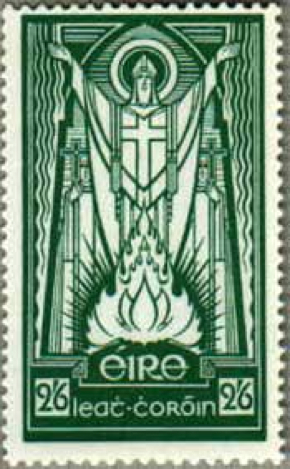
Life, if it is to be bearable, must be filled with love.
By the grace of God, I have been given great loves in my life: Love of my Lord, love of family and love of my religion.
But alongside these greatest loves, my life has brought me still further loves, as well.
There is my love of Ireland, this blessed land that so opened my eyes to the true power of the Faith when I first arrived here in 2004.
And then, there is this dear, dear friend of mine, whom I never met.
For he died ten years before I was born.
I speak of Belloc, dear Hilaire Belloc. For no matter that he died long ago, he is one of the dearest friends I have ever found in this life.
Now, sometimes my life’s great loves come together, as it were, in pairs. And so it is with Belloc and Ireland.
For while Belloc is normally thought of as Anglo-French (born of a French father near Paris, but raised by his English mother in Sussex) Belloc was also connected to Ireland.
First, his great grandfather came from County Cork. But moreover there was the great love of his life. Her name was Elodie Hogan and she was Irish. The literal-minded will tell us that Elodie was, in fact, Irish-American – a first-generation American born of Irish parents in California.
But Elodie, I say, was Irish. She was fully possessed of that deeply devout Catholicism that so characterised Ireland in the Nineteetnh Century. And her Irish piety began to work its unsung magic on Belloc’s soul.
For it seems that the young Belloc, on going up to Oxford, had begun to cool in his faith. Devout as a child, he became more lax. In a letter from 1896, He speaks of ‘the wreck of five years’ ending when he became betrothed to Elodie and began to go daily to the Mass with her.
And he continues in that same letter:
I tell you it is like home to me … to be able to pray at Our Lady’s altar and to find my childhood again. I had no conception till I [became betrothed to Elodie] of what these five years had been. My soul had frozen – a little more and I should have done nothing with my life.
And here is further testimony from Belloc in a poem to the extraordinary impact Elodie had upon his soul:
You came without a human sound,
You came and brought my soul to me;
…I felt the gesture of your hands,
You signed my forehead with the Cross;
The gesture of your holy hands
Was bounteous–like the misty lands
Along the Hills in Calvados.
It was the Irish Catholic faith of Elodie Belloc, then, that unfroze Hilaire Belloc’s soul and set him on the course that would so inspire G.K. Chesterton, among countless other souls in the world of English Catholicism.

In time, we want to say much more at this weblog about all this. But today, dear Lector, we will leave you with this: a short, haunting essay that Belloc wrote on St Patrick and the miracle of Ireland.
St Patrick is still alive, Belloc tells us, working miracles. I wonder if he included in these miracles the miracle of Elodie …?
In any event, the modern mind will be skeptical of the idea of these miracles of Saint Patrick that Belloc suggests here.
For myself, I am much more sceptical of the modern mind than I am of Belloc.
For myself, I think that Belloc points us here to something real and numinous: that Saint Patrick did not desert his people when he died in the fifth century, but he continues guiding their destiny still.
O St. Patrick, come to us! Come to us, all who are Irish or who, like myself, are not Irish (save for a little blood) but love Ireland, understand the miracle that is Ireland and seek to preserve Ireland …
Illumine us, as I believe you once illumined Elodie and her husband Hilaire, who writes as follows …

Hilaire Belloc on St. Patrick
If there is one thing that people who are not Catholic have gone wrong upon more than another in the intellectual things of life, it is the conception of a Personality.
They are muddled about it where their own little selves are concerned, they misappreciate it when they deal with the problems of society, and they have a very weak hold of it when they consider (if they do consider) the nature of Almighty God.
Now, personality is everything. It was a Personal Will that made all things, visible and invisible.
Our hope of immortality resides in this, that we are persons, and half our frailties proceed from a misapprehension of the awful responsibilities which personality involves or a cowardly ignorance of its powers of self-government.
The hundred and one errors which this main error leads to include a bad error on the nature of history. Your modern non-Catholic or anti-Catholic historian is always misunderstanding, underestimating, or muddling the role played in the affairs of men by great and individual Personalities.
That is why he is so lamentably weak upon the function of legend; that is why he makes a fetish of documentary evidence and has no grip upon the value of tradition.
For traditions spring from some personality invariably, and the function of legend, whether it be a rigidly true legend or one tinged with make-believe, is to interpret Personality.
Legends have vitality and continue, because in their origin they so exactly serve to explain or illustrate some personal character in a man which no cold statement could give.
Now St. Patrick, the whole story and effect of him, is a matter of Personality.
There was once–twenty or thirty years ago–a whole school of dunderheads who wondered whether St. Patrick ever existed, because the mass of legends surrounding his name troubled them.

How on earth (one wonders) do such scholars consider their fellow-beings! Have they ever seen a crowd cheering a popular hero, or noticed the expression upon men’s faces when they spoke of some friend of striking power recently dead?
A great growth of legends around a man is the very best proof you could have not only of his existence but of the fact that he was an origin and a beginning, and that things sprang from his will or his vision.
There were some who seemed to think it a kind of favour done to the indestructible body of Irish Catholicism when Mr. Bury wrote his learned Protestant book upon St. Patrick.
It was a critical and very careful bit of work, and was deservedly praised; but the favour done us I could not see! It is all to the advantage of non-Catholic history that it should be sane, and that a great Protestant historian should make true history out of a great historical figure was a very good sign.
It was a long step back towards common sense compared with the German absurdities which had left their victims doubting almost all the solid foundation of the European story; but as for us Catholics, we had no need to be told it.
Not only was there a St. Patrick in history, but there is a St. Patrick on the shores of his eastern sea and throughout all Ireland today.
It is a presence that stares you in the face, and physically almost haunts you.
Let a man sail along the Leinster coast on such a day as renders the Wicklow Mountains clear up-weather behind him, and the Mourne Mountains perhaps in storm, lifted clearly above the sea down the wind.
He is taking some such course as that on which St. Patrick sailed, and if he will land from time to time from his little boat at the end of each day’s sailing, and hear Mass in the morning before he sails further northward, he will know in what way St. Patrick inhabits the soil which he rendered sacred.
We know that among the marks of holiness is the working of miracles.
Ireland is the greatest miracle any saint ever worked. It is a miracle and a nexus of miracles. Among other miracles, it is a nation raised from the dead.
The preservation of the Faith by the Irish is an historical miracle comparable to nothing else in Europe.
There never was, and please God never can be, so prolonged and insanely violent a persecution of men by their fellow-men as was undertaken for centuries against the Faith in Ireland: and it has completely failed.
I know of no example in history of failure following upon such effort. It had behind it in combination the two most powerful of the evil passions of men, terror and greed.
And so amazing is it that they did not attain their end, that perpetually as one reads one finds the authors of the dreadful business now at one period, now at another, assuming with certitude that their success is achieved.
Then, after centuries, it is almost suddenly perceived — and in our own time — that it has not been achieved and never will be.
What a complexity of strange coincidences combined, coming out of nothing as it were, advancing like spirits summoned on to the stage, all to effect this end!
Think of the American Colonies; with one little exception they were perhaps the most completely non-Catholic society of their time.
Their successful rebellion against the mother country meant many things, and led to many prophecies. Who could have guessed that one of its chief results would be the furnishing of a free refuge for the Irish?
The famine, all human opinion imagined, and all human judgment was bound to conclude, was a mortal wound, coming in as the ally of the vile persecution I have named. It has turned out the very contrary.
From it there springs indirectly the dispersion, and that power which comes from unity in dispersion, of Irish Catholicism.
Who, looking at the huge financial power that dominated Europe, and England in particular, during the youth of our own generation, could have dreamt that in any corner of Europe, least of all in the poorest and most ruined corner of Christendom, an effective resistance could be raised?
Behind the enemies of Ireland, furnishing them with all their modern strength, was that base and secret master of modern things, the usurer.
He it was far more than the gentry of the island who demanded toll, and, through the mortgages on the Irish estates, had determined to drain Ireland as he has drained and rendered desert so much else. Is it not a miracle that he has failed?
Ireland is a nation risen from the dead; and to raise one man from the dead is surely miraculous enough to convince one of the power of a great spirit.
This miracle, as I am prepared to believe, is the last and the greatest of St. Patrick’s.

When I was last in Ireland, I bought in the town of Wexford a coloured picture of St. Patrick which greatly pleased me. Most of it was green in colour, and St. Patrick wore a mitre and had a crosier in his hand. He was turning into the sea a number of nasty reptiles: snakes and toads and the rest.
I bought this picture because it seemed to me as modern a piece of symbolism as ever I had seen: and that was why I bought it for my children and for my home.
There was a few pence change, but I did not want it.
The person who sold me the picture said they would spend the change in candles for St. Patrick’s altar.
So St. Patrick is still alive.
Foreword for Monarchy by Roger Buck
Buying Books at Amazon Through These Links Gives Us a Commission. This Supports Our Apostolate. Thank You if You Can Help Us Like This!


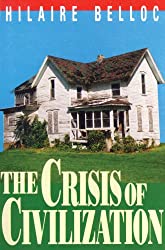

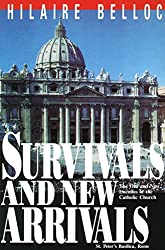




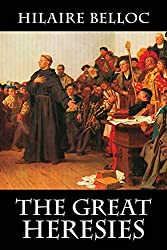
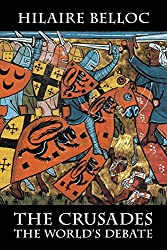
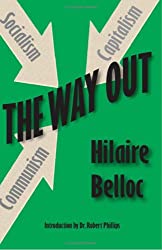
Comments
comments are currently closed
5 responses to “Hilaire Belloc, St. Patrick and Catholic Ireland”
+JMJ+
This is an incredible essay. I really appreciate the blog, and the whole site. I’m Iriah-American, now in Canada, but 100% Irish descent. Grandfather on my dad’s side from Co. Mayo, mom’s side from Cos. Donegal and Tyrone. I grew up in this rich tradition, as best my parents could cascade it.
Again, thank you for taking the time to give us all this site.
AMDG
James
James, thank you, at very long last, for this much appreciated comment. I am very pleased to hear how the tradition has been carried to you on the other side of the Atlantic! An incredible tradition and I hope to explore it much more as this site returns to life, once more …
[…] Note: We now have a further post about Hilaire Belloc and Catholic Ireland here. […]
[…] By contrast, France and Ireland seemed holy to them. (There is a piece at this site about how much Hilaire Belloc revered Catholic Ireland). […]
[…] life-force that is the Mystery that St. Patrick brought is now being slowly […]